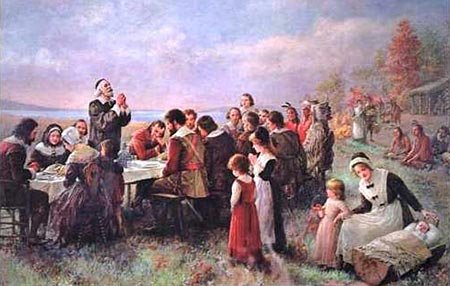Summary of Revivals in Church History
A.D. 100-1700

Puritans
Throughout history many people led reform and revival movements, especially when faith sunk low and formalism set in. Those movements powerfully affected the Church and the community.
From the second century into the fifth century, the Montanists flourished in Asia Minor. The leader of this group, Montanus, spoke in tongues at his baptism and began prophesying. His movement called people to holy living, and they expected the Lord to return soon. They valued the gifts of the Spirit, especially prophecy. The lawyer-theologian, Tertullian, joined the movement early in the third century and challenged the worldliness of the Church of his day.
Beginning in the fourth century, various church leaders founded monastic orders devoted to the service of God and people. In the fifth century Augustine of Hippo in North Africa strongly influenced the Church and society through his writings, and Patrick told of the conversions of thousands of the Irish, initiating active Celtic missionary activity.
By A.D. 600 Augustine of Canterbury and his missionaries saw thousands accept Christianity in England, and it was reported that they imitated the powers of the apostles in the signs that they displayed.
In the twelfth century Peter Waldo and the Waldensians began reform and revival movements that challenged the church and impacted society.
In the thirteenth century Francis of Assisi called people to forsake all and follow Jesus. Many did, and they influenced others in society.
John Wycliffe and his itinerant preachers, the Lollards, made a powerful impact on England in the fourteenth century. They aroused strong opposition leading to many martyrdoms.
In the fifteenth century John Huss in Bohemia and Girolamo Savonarola in Italy led strong reform movements that brought revival but led to their martyrdoms. Huss was known for his unblemished purity of life and uncompromising stand for truth in a decadent society. Savonarola fasted, prayed, and preached with prophetic fire, which confronted evils of his time, filled the churches, and brought honesty into much of civic and business life.
Gutenberg’s printing press, invented in 1456, made the Scriptures widely available. This helped spark the sixteenth-century Reformation with leaders such as Martin Luther in Germany proclaiming justification by faith alone based on the supreme authority of Scripture; John Calvin in Geneva emphasizing the awesome sovereignty and grace of God; and Huldreich Zwingli in Switzerland initially calling for freedom of conscience, though later denying this for others. Radical reformers, such as Felix Manz, the first Anabaptist martyr, sometimes were killed in those days of heated religious conflict. John Knox fearlessly called Scotland to repentance amid the intense political and religious zeal of the times.
Revival movements have won thousands of people to faith in Jesus Christ and have made a powerful impact on society. And they still happen today! Using many eyewitness accounts, this book tells a little of that story from the Great Awakening of the eighteenth century to revivals today.
© Geoff Waugh. Used by permission.



